Fukushima's recovery from the earthquake and nuclear disaster
Fukushima Prefecture suffered great damage due to the Great East Japan Earthquake that occurred on March 11, 2011 and the effects of the TEPCO Fukushima Daiichi Nuclear Power Plant accident. However, we have continued working hard for recovery and revitalization with warm support from all over Japan. While there are people who are forced to evacuate even now, after eleven years since the disaster, decontamination and recovery of infrastructures have accomplished enabling many people in the prefecture to return to normal life.

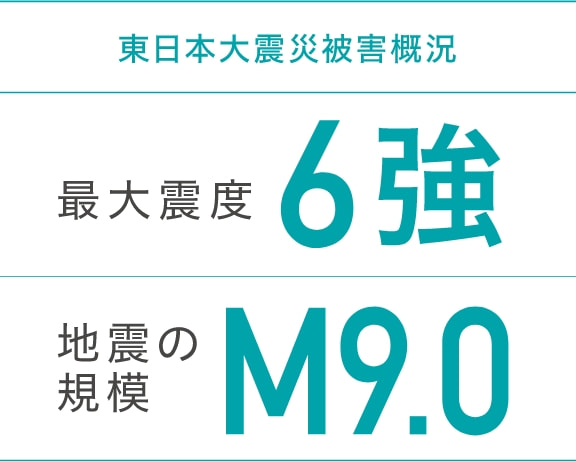
 Local train coaches severely damaged by the big tsunami
Local train coaches severely damaged by the big tsunami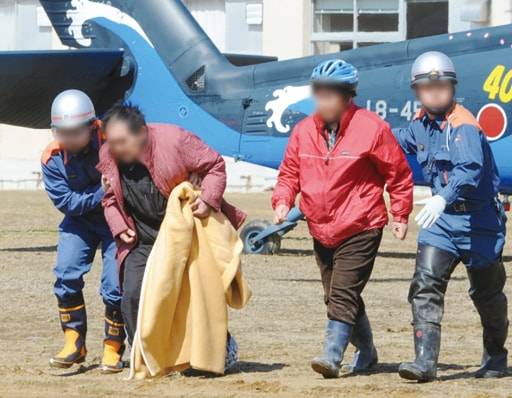 A resident evacuating to a school ground. Helicopters played a big role in rescue
A resident evacuating to a school ground. Helicopters played a big role in rescue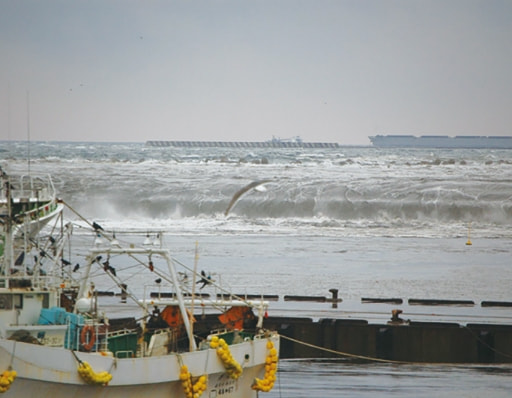 The second tsunami hitting the port
The second tsunami hitting the port A national route completely blocked due to the landslide in Fukushima City
A national route completely blocked due to the landslide in Fukushima City Students' evacuation to their school ground due to the big quake
Students' evacuation to their school ground due to the big quake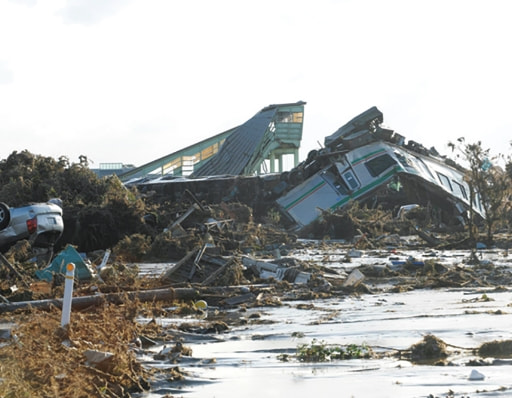 A destroyed train bent into an L shape in front of the train station building
A destroyed train bent into an L shape in front of the train station building

Airborne radiation levels
Fukushima Prefecture monitors airborne radiation levels at 3,659 points within the prefecture and releases the results to the public. The levels have decreased greatly compared to those of April 2011, and most areas with in the prefectures currently have levels comparable to those of major cities in other countries.
Transition of evacuation areas
Following the accident at the Tokyo Electric Power Company's Fukushima Daiichi Nuclear Power Plant, many municipalities in the Hamadori area had their evacuation directives lifted by April 2017.
In April 2019, the evacuation directive was lifted at a part of Okuma Town, one of Fukushima Daiichi Nuclear Power Plant Location Authority, excluding the "Difficult-to-return zone" there. In addition, in March 2020, the evacuation directive was lifted in some areas of Futaba population, the only town in which the entire town had been evacuated.
In addition, the evacuation directives have been lifted for the first time in certain parts of the "Difficult-to-return zone" of Tomioka Town, Okuma Town, and Futaba Town, and the JR Joban Line has been fully reopened for the first time in nine years, accelerating the movement to lift the evacuation directives.
Decreased from 12% to approx. 2.4% across
Fukushima Prefecture from April 2011 to March 2020

Preparing infrastructure
Restoration work completed in the Aizu and Central regions. The Coastal Region is also 98.9% complete. The expansion to 4 lanes between Iwaki-Chuo IC and Hirono IC on the Joban Expressway is complete, and preparation work for the main 8 routes continuing to the Coastal Region is underway. Road infrastructure is being improved and strengthened.
◆Progress by construction site and by region
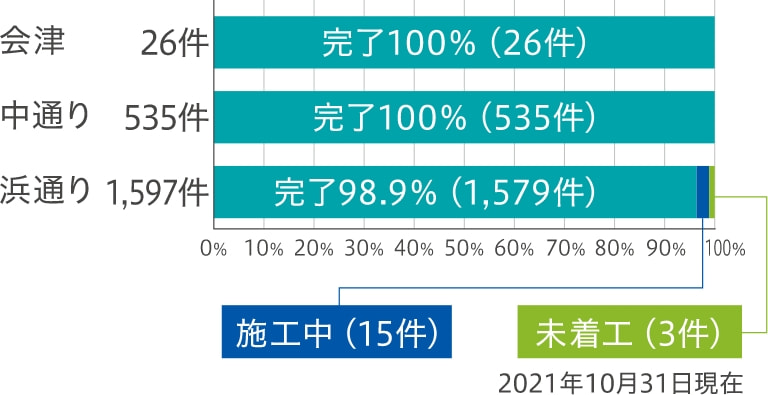
◆[Reference] Progress on Evacuation directives zones, etc.
Disaster assessment has been completed at all of the evacuation directives cancellation preparation zone and the restricted residence zone. At the difficult-to-return zones, the work will be carried on coordinating with decontamination works provided by the central government.

※Including areas in Tamura City, Minamisoma City, Katsurao Village, Kawauchi Village, Naraha Town, Namie Town, Kawamata Town, Iitate Village, and Tomioka Town where the evacuation directive was cancelled.
◆Transportation network development for revitalization
The prefecture is preparing the eight main routes connected to the Hamadori region (an area surrounded by expressways and directly controlled national highways) to strongly support revitalization at areas where the evacuation directives were lifted in surrounding areas.

Joban Expressway
・Expansion to four-lane roads between Iwaki-chuo IC and Hirono IC
Work started on the 4-lane expansion between Iwaki-Chuo IC and Hirono IC was completed in 2021.
・Preparing an additional lane between Hirono IC and Yamamoto IC (6 places/total 13.5 km)
NEXCO EAST has proposed to install additional lanes at 6 places between Hirono IC and Yamamoto IC to relieve traffic congestion.
・Opening of Joban-Futaba IC

◆Safe and reliable food (monitoring status of agricultural, forestry and fishery products from Fukushima prefecture)
No product of brown rice, vegetables and fruits, livestock products, cultivated mushrooms, etc., exceeds standard limits at the inspection before shipping.
| Classification | Total number of samples | Number of samples exceeding the standard limits |
Proportion of samples exceeding the standard limits |
|
|---|---|---|---|---|
| Brown rice (produced in 2021) | About 240,000 | 0 | 0.00% | No product exceeds standard limits |
| Vegetables and fruits | 1,439 | 0 | 0.00% | |
| Livestock products | 1,764 | 0 | 0.00% | |
| Cultivated wild edible plants and mushrooms | 373 | 0 | 0.00% | |
| Fresh water farmed fish | 27 | 0 | 0.00% | |
| Wild edible plants and mushrooms | 595 | 0 | 0.00% | |
| Fresh water fishery products | 268 | 0 | 0.00% | |
| Marine fishery products | 1,948 | 1 | 0.05% |
Fukushima Daiichi Nuclear Power Plant Now
◆Ongoing improvement of work environment
Airborne radiation levels with regard to facing and debris removal have decreased, allowing the Green Zone, where only light equipment (disposable dust masks, goggles, gloves, work boots) is required to expand to 96% of the entire area today.


- Wearing full-face mask is required for any work (excluding inspection work) carried out inside a building including water process equipment [the Multi-nuclide Removal Facility, etc.].
- Wearing full-face mask is required for work (excluding work without handling concentrated salt water, patrolling, on-site survey for work planning, and inspection work) at the tank area which contains concentrated salt water or Sr process water or work related to tank transfer line.
- Specified light work (such as patrolling, monitoring, delivery of products from outside)
◆Expanding areas where additional equipment is not required
Even in the Green Zone, areas where no further contamination due to radioactive material has been confirmed have become accessible without additional equipment, including gloves. Since November 2018, that area has expanded further, even including a hill no more than about 100m from Reactors 1-4, where only light equipment is needed for inspection work and masks and gloves are not needed.
 The Governor's visit (November 1, 2018)
The Governor's visit (November 1, 2018)◆Progress on reactor decommissioning

Reactor 1
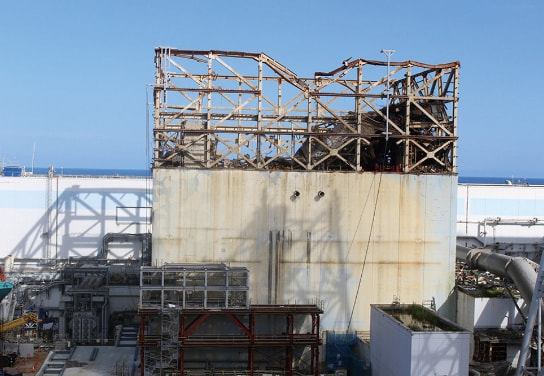
To remove fuel from the spent fuel pool, dismantling of the building roof cover (remaining sections) concludes and work begins on installing a large cover in September 2021. A survey is also conducted of the inside of the containment vessel to remove fuel debris.*
Reactor 2

To remove fuel from the spent fuel pool, construction of an assembly base/front chamber for removing fuel is carried out on the southern side of the reactor building. In addition, as the first unit to have fuel debris* removed, preparations proceed to commence removal.
Reactor 3
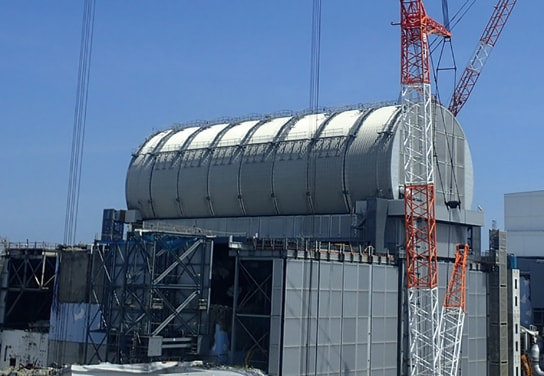
Removal of fuel (566 rods) from the spent fuel pool is concluded on February 28, 2021.
Furthermore, the necessity of an additional survey of the inside of the containment vessel is considered for the removal of fuel debris.*
Reactor 4

Removal of fuel (1,535 rods) from the spent fuel pool is concluded on December 22, 2014, eliminating risk caused by fuel.
Reactors 5 and 6

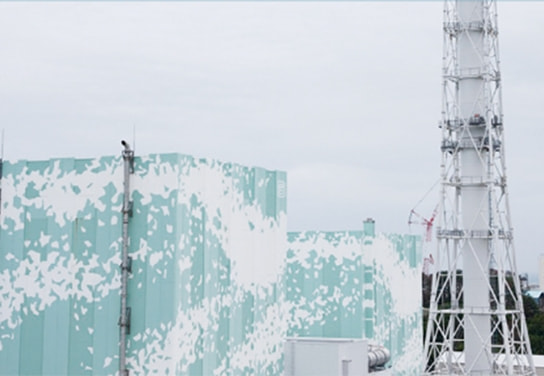
Decommissioned in January 2014. Equipment from both reactors, including the spent fuel pools which store spent fuel were in good condition and providing stable management. There is consideration to use the reactors for demonstration testing in research and development in the future.
INDEXGet to know Fukushima
03Challenge



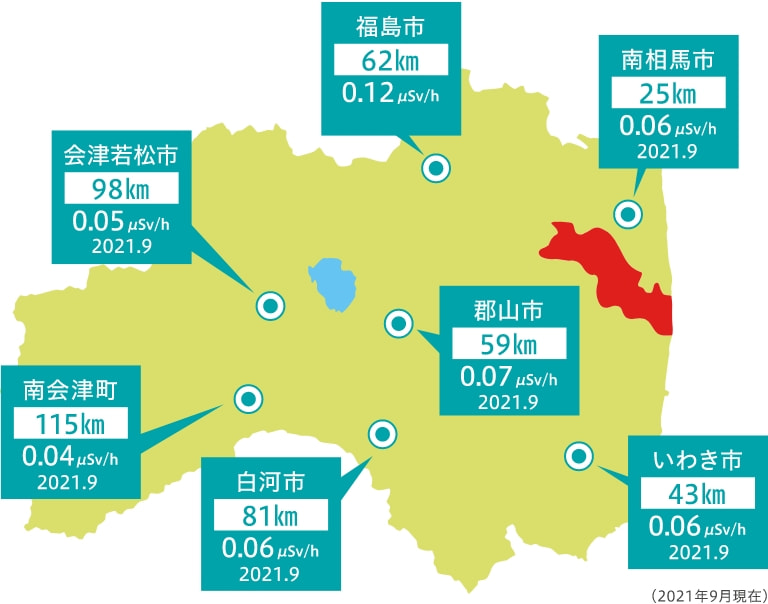




* Fuel debris: The core fuel in the reactor pressure vessel melts and solidifies together with the structure in the reactor containment vessel due to an accident.